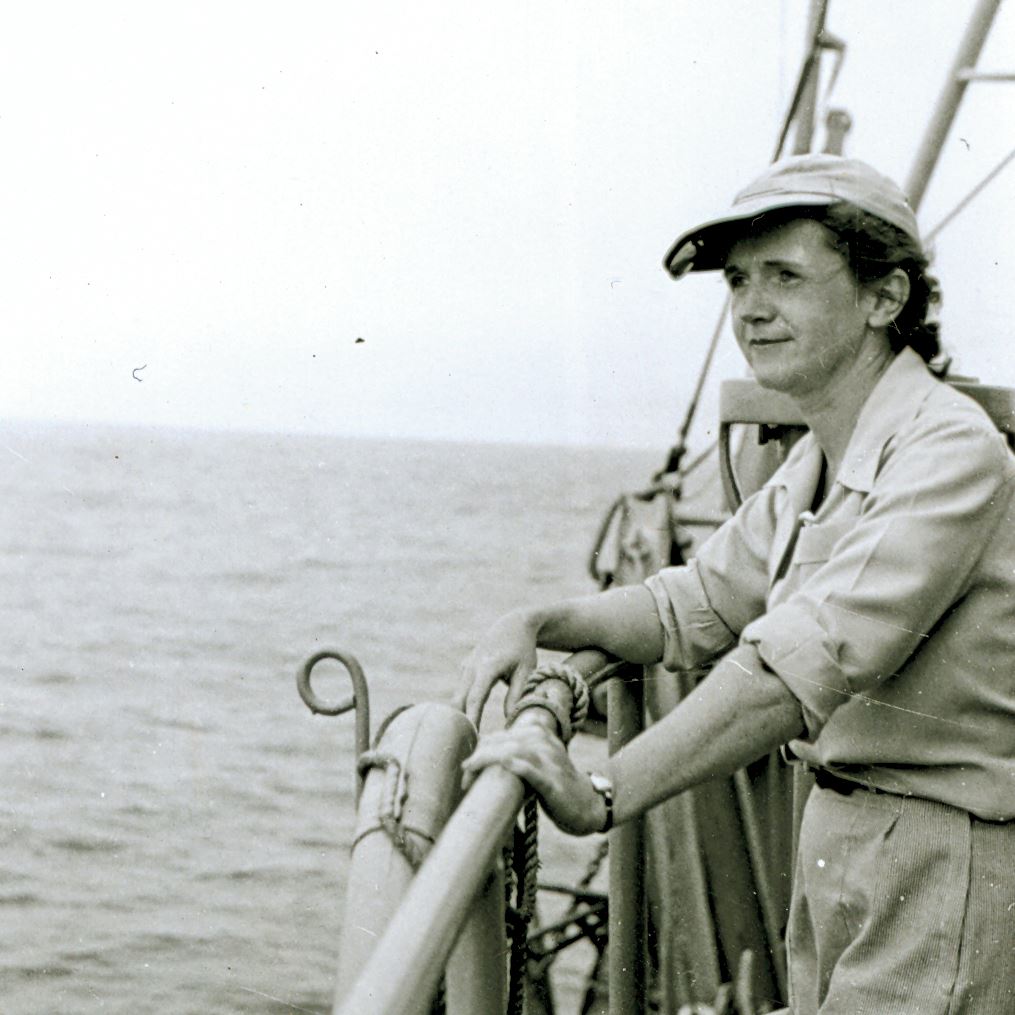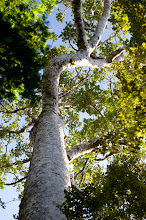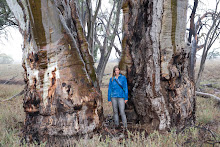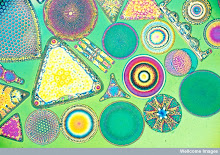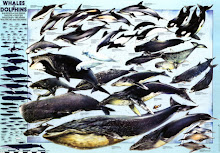


"Not under any public discussion or commentary by any scientists: what is/will be the impact of on-going radiation traveling across the Pacific Ocean as it encounters miles and miles of toxic degrading plastic? How will hormone disrupting plastic and radioactivity impact this vast area’s ecology? What kind of real future will sea birds and all other sea life have with this gigantic contamination?"
http://aircrap.org/pacific-ocean-radioactive-garbage-dump/331431/
Dr. Ilya Sandra Perlingieri
May 14, 2011
“The ocean is now a plastic wasteland.” Capt. Charles Moore, 2010
Ocean Contamination
For the past two months, it has not been possible to separate the on-going radioactive poisons heading east on the Pacific Ocean currents from Japan to North America (and thence around the globe) with other serious oceanic environmental troubles. This is not simply just a one-issue crisis, even though Fukushima’s radioactive nightmare continues to poison the rest of our planet.
Firstly, of primary importance for our health and well being: it is not a safe choice to eat any fish or crustaceans caught there. This is due, of course, to the widespread radioactivity of the Pacific Ocean.
The tragedy of the now contaminated entire Pacific Ocean is as epic as the Gulf of Mexico’s mass dispersants poisoning. More than a year since the BP oil-rig catastrophe, the impact on both the human and wildlife populations continues to soar to disastrous heights. The death toll for all wildlife will never be accurately known, as unconscionably sea turtles (and unknown other kinds of sea life) were burned alive. For months, no tally was taken of dead mammals and birds washing ashore. It was more than ineptitude and poor management of this enormous crisis. It was, and continues to be, a criminal cover-up of vast proportions.
The Center for Biological Diversity (CBD) released a new report estimating “that around 26,000 dolphins and whales, 82,000 birds, and 6,000 sea turtles were likely harmed [or killed] by the spill.”(1) There was far more than harm. There was much unaccounted wildlife death; and the now one-year-later continuing toll may be far higher. However, as with Fukushima’s nuclear reactors tragedy, nothing has been done to safeguard human lives, nor protect all of the ocean’s animals and birds (really, the entire vast and precious ecosystem!). All of this is under constant siege from human negligence, deliberate harm, and corporate greed.
It is quite clear, from both these enormous on-going disasters, that corporate-driven secret plans and responses do not include any real solutions. Harm is their watchword, as our planet’s web-of-life continues to unravel at an accelerated pace. This is due to human malfeasance. A new report published shows how all the hundreds of Fukushima workers, now putting their lives on the line for a devastating situation that cannot be fixed, are all expendable. See:
www.globalresearch.ca/index.php?context=va&aid=24543
Dead fish and sharks are already arriving along the California coast. Although the cause is supposedly unknown, it is doubtful if we will ever be told that any dead sea life washing ashore is most likely radioactive. See:
http://abclocal.go.com/kabc/story?section=news/local/ventura_county&id=8081041
and
http://sanfrancisco.cbslocal.com/2011/04/22/dead-leopard-sharks-found-in-redwood-city-lagoons
The EPA has refused to test the Gulf of Alaska for radioactivity. In their latest negligence, EPA posted on May 3, their refusal to monitor daily radiation from Fukushima, “due to the consistent decrease in radiation levels related to the Japanese nuclear incident.”(2) This was no “incident.”
This is why I have repeatedly urged everyone to join together and get radiation monitoring in your area. Low levels of ionizing radiation, as Dr. Helen Caldicott has frequently said are extremely dangerous. Further, she has consistently noted that it is deliberately misleading to connect exterior radiation levels with internal ones. We will never get the truth from any government agency or official. In fact, their planned deceit and intentional extreme harm put us all in continued danger. It is vital that we get accurate information ourselves, and know how much we can really protect ourselves.
As I have learned personally from the cover-up during and after 2003, 1-million-acre California FIRESTORM, any government agency has already long been compromised and corrupted. As Jeff Rense wrote on April 21, it is the “latest example of blatant Federal negligence. …This is another egregious abandonment of their obligation to watch over the public health and welfare. …[and] the public’s right to know and be kept safe and informed be damned.” His article also has an excellent map, showing the ocean currents coming to the West Coast and up to Alaska. This continued refusal to test the waters also protects the now-toxic catches of Alaska’s fishing industry, while poisoning anyone who eats contaminated fish:
www.rense.com/general93/curr.htm
This is not the fishing industry’s fault, per se. [That is another separate article.] Rather, it is the result of this enormous radioactive contamination that puts everything in grave jeopardy. Does any of this really compute to a rational person who still can think critically and sees the bigger picture?
This article covers another oceanic nightmare that must be included in our awareness of what is happening throughout the entire Pacific Ocean. It does impact all of us. Our oceans have been in long-term and devastating decline for decades. The seas are no longer what we may think of: miles and miles of pristine and beautiful glistening waters, gentle sea breezes, with an occasional whale or dolphin leaping out of the water.
The Pacific Ocean has also been poisoned with colossal amounts of garbage floating in a vortex area called NORTH PACIFIC SUBTROPICAL GYRE. This is the Pacific Ocean’s floating toxic, petroleum-based plastics dump that has contaminated and killed countless millions of fish and mammals, including dolphins and seals. In 1997, these huge areas were discovered by Captain Charles Moore while he was returning to California from Hawaii on his vessel, the 50-foot “Algalita” (now the name of the foundation he set up). He took a detour through a region with little wind, due to the ocean currents. Normally, this area is usually avoided by sailors, because of these very calm seas.
Day after day, as Captain Moore sailed, he saw endless piles of plastic trash floating for miles and miles. Originally, this area was called the Great Pacific Garbage Patch. Far from some small “patch,” it is thought that this massive amount is actually twice the size of the continental US. This swirling soup of floating garbage is about 500-nautical miles off California’s coast, and stretches across the northern part of the Pacific Ocean, past Hawaii, and comes close to Japan. Unseen by satellite photos, this massive “sea of rubbish is translucent and [is on, and also] lies just below the water’s surface” and continues under water through the water column.(3)
Since Moore started doing this research, the size of this trash has grown enormously. Now the Great Garbage Patch is divided into the Western and Eastern Garbage Patch, on either side of the Hawaiian archipelago. According to Marcus Eriksen, Algalita’s research director, there is about 100-million tons of flotsam floating in this region.
In 1994, Captain Moore had originally founded Algalita Marine Research Foundation, to focus on the “restoration of disappearing giant kelp forests and the improvement of water quality through the preservation and re-construction of wetlands along California’s coast.”(4) He was so shocked by what he saw in the Pacific Ocean, that he became a dedicated environmental activist, and decided to raise global awareness and find much-needed answers. With his foundation, he now focuses on collaborative ocean research to find out the extent of this massive amount of floating garbage and the damage it continues to cause. The non-profit foundation, now in its sixteenth year, has brought worldwide attention to the fate of millions of tons of discarded plastics and how it has impacted all sea life and damaged human health.
Firstly, even the smallest particles of plastic, are broken down “by wave action or sunlight” (called photodegradation), and then they are eaten by fish. Once eaten, these plastics then travel up the ocean food chain (from small fish to larger ones), and they eventually wind up on your seafood dinner plate. “Every little piece of plastic manufactured in the past 50 years that made it into the ocean is still out there somewhere,” said chemist Tony Andrady, with the US-based Research Triangle Institute.(5) This goes for EVERY bit of plastic made: from shredded plastic to any large item. See:
www.youtube.com/watch?v=tnUjTHB1lvM
According to the UN Environment Program, “plastic debris causes the deaths of more than a million sea birds every year, as well as more than 100,000 marine mammals. Syringes, cigarette lighters, and toothbrushes have been found inside the stomachs of dead seabirds,” mistaking them for food.(6) “A Dutch study in the North Sea of fulmar seabirds concluded [that] 95 percent of the birds had plastics in their stomachs. More than 1600 pieces were found in the stomach of one bird in Belgium.”(7)
The ocean is now “an endless trail of trash floating in the middle of the Pacific: water bottles, plastic crates, disposable(sic) diapers, bath toys, cigarette lighters, tampon applicators [styrofoam, too]; a veritable buffet of convenience culture.”(8) This refuse is what is dumped in the ocean from landfills. Unbelievably, other trash includes: kayaks, carrier, refrigerators, furniture, Lego blocks, footballs, and fishing nets. All these items were thrown overboard either from oil-rig platforms or ships. As on land around the globe, our seas have become a vast stench of sewage.
Possibly millions (no one is counting) of the plastic 6-pak holders for soda and beer have been found strangling sea and other wildlife [e.g., fish, otters, and small seals]. The plastic diameter to hold these cans is just wide enough for some small animal’s head to get stuck in it. Once their head is caught, they cannot get out. In the oceans, plastics also break down into smaller and smaller pieces. These are mistaken for fish eggs or other kinds of food and ingested by fish. Last month, the Los Angeles Times reported that researchers have found “about 35 percent of fish they collected in the northern Pacific Ocean in 2008 had plastic in their stomachs. …Some lantern fish [had] as many as 83 plastic fragments in a single fish.”(9) Often tiny pieces of plastics are part of the plankton that whales eat. Plastic does kill. This is yet another reason not to use plastic. See:
and
www.youtube.com/watch?v=yom6zlm5VqE
and
www.youtube.com/watch?v=ftbmO4D4DK4
Captain Charles Moore, who has been documenting this “waste slick more insidious than an oil spill, due to the impossibility of cleanup,” has produced a documentary about this called “Synthetic Sea.”
www.youtube.com/watch?v=pEKohTXF4Xw
Captain Moore calls the ocean “the world’s largest toilet bowl that never flushes.” In 1999, as part of his research to carefully document this garbage, he discovered that “for every pound of naturally occurring plankton…[there was [a] yielded [of] 6 pounds of plastic.”(10) By 2008, in the same original region, they recorded a staggering increase of 45 to 1 times more plastic than plankton! There were less tan-colored pieces of plastic. Moore believes they have been eaten by birds and other plankton feeders, because they resemble krill. Color is an important factor as is shape, as it mimics food. “Over 70 species of birds have been found to ingest these pieces of plastic that resemble their natural food supply. Studies have shown that they then have higher PCBs content, and it is a way to transport pollutions.”(11) Plastic does not “break down” anywhere in our environment. It just get smaller and smaller to cause more harm throughout the entire web-of-life as it travels up the food chain. Thus, the “quality of life” for the entire marine ecosystem has been undermined and ruined.
As noted in the above-cited excellent “Synthetic Sea” 2010 documentary: “There’s no such a thing as biodegradation of petroleum-based plastic.”
The author of another article, Anna Cummins who traveled on the “Algalita” (Moore’s oceanic research vessel), wrote that: “though we’ve all come on this trip (in 2004) fully prepared to find constant evidence of plastic thousands of miles from land, it’s still shocking to see it in person. It simply does not belong here. …The highest level of pollution [is] in highly productive zones.”(12)
This essential research is done in “international waters,” so it has been barely touched by any agency in charge of environmental issues in any country. The garbage just continues to grow. As usual, much of the scientific research stays in journals. However, there are staggering pollution and reproductive issues that will not go away, and will contribute to the continued dramatic dwindling numbers of ocean creatures. The repercussions of this toxicity go far beyond the oceans. There are two main crises that are already impacting all of us.
Phthalates
(1) Plastic is a well-known chemical hormone disruptor. It changes and toxifies the body’s natural hormonal balance. It is one of the major reasons for hermaphroditic indications in frogs and other amphibians. This research goes back to the late 1970s. Plastics have been part of our daily life for almost a century. They have replaced many natural and safer products. Hard and soft plastics are chemical and petroleum-based. Ubiquitous in our environment, they have not been proven safe to use. Thousands of new chemicals and plastics are put on the market each year without the benefit of human safety testing. Chemical corporations continue to spend billions to advertise and market plastics as “necessary” to our daily lives. Yet, most people still do not realize the invisible and toxic risks to using plastics.
One category of industrial chemicals that are used as softeners and emulsifiers is called phthalates [pronounced “tha-lates”]. These plastics are found in products from baby bottles, thin fruit and vegetable produce bags, food wraps, children’s toys, food storage items, lubricants, medicals devices and IV bags, wood finishes, perfumes, and thousands of beauty products. They emit cumulative but invisible highly dangerous toxins. Since the 1970s, phthalates have been known to be global pollutants. Even so, more than 1-billion pounds of toxic phthalates are produced annually. No extensive long-term tests were done before they were marketed. Sometimes, phthalates may be listed as: Dibutyl phthalate (DBP); Diethyl phthalate (DEP); or Butylbenzyl phthalate (BBP). When you purchase most products containing phthalates, most often there is no warning label to advise you, as a consumer, of the dangers. Phthalates now show up frequently in human urine as a biomarker from daily exposure.
Phthalates are a class of extremely dangerous chemicals known as hormone or endocrine disruptors, popularly called “gender-benders.” This means that these chemicals are absorbed into the body (by breathing the off-gassing and by ingesting) and then cause damage by disrupting hormonal balances (both in humans and all animals). These poisons bio-accumulate in us and all other living creatures. They cause serious developmental harm from the very beginnings of life: in utero, in sperm DNA, in organ damage, early puberty, cancer (testicular, prostate, and breast –all of which have increased dramatically over the past four decades). Phthalates suppress the proper functioning of the immune system.
With the Fukushima reactors catastrophe, now out of control, there is no research on the synergistic relationship between these chemical hormone disruptors and radioactive Uranium (spewing from Fukushima’s reactors), also a hormone disruptor.
(2) Hormone disruption is a major factor in the increase of obesity in the US. The media portrays this as a dietary issue. Yes, it is. But far past this is the use of toxic plastics that surround our every move: from nuking it in microwave ovens and boiling food in pre-packaged “pouches” [loaded with chemical poisons] to drinking many different (already chemically poisoned) drinks bottled in it. There is no nutritional value in these kinds of packaged and prepared foods. These toxins are stored in body fat, and wreck the body’s ability to repair itself.
As it works its way up the food chain, where bigger fish eat the already contaminated fish (who’ve already eaten even smaller ones), these toxins bio-accumulate synergistically, until it reaches the human population –billions of whom have been eating/drinking food packaged in plastic. This goes for other proteins sources as well. Cows also eat a contaminated food supply: either grass loaded with other chemical hormone-disrupting pesticides, or water sources filled with chemicals and antibiotics. Some of the best research on hormone disruption and its long-term generational impact can be found in Dr. Theo Colburn’s et al. “Our Stolen Future.” This is essential reading.
Hormone-disrupting chemicals and radiation not only affect the genders of animals, they can also be linked to DNA damage and birth defects in humans. This is rarely reported, again because the gravity of these findings would shut down the chemical and nuclear companies, if people knew the extent of the genetic contamination with which we are already dealing (actually, since the bombings of Hiroshima and Nagasaki). In her article on the impact of radiation and nuclear power, geoscientist Leuren Moret notes:
“The daily ‘permitted’ radioactive emissions and discharges into the Irish Sea since the 1950’s, have turned the contaminated sediments, seawater, and biosphere into a radioactive sink or permanent point source of radiation, with serious local and global effects. Daily ‘permitted’ radioactive emissions and discharges from global sources have accumulated to higher radiation levels in the biosphere than any Chernobyls would release, and are the main cause of the large increase in ocean dead zones since the 1970’s. People are missing or overlooking the serious impact of chronic releases…a strategy guaranteed to continue to fail.”(13)
How much further will this daily contamination of the Irish Sea, and the vast additional nuclear and chemical synergistic contamination of the Pacific Ocean affect us all? Everything is inter-connected. Our planet’s entire web-of-life continues to be in an overwhelming state of siege. Most of this is invisible (unless it affects you or your family directly!). Nonetheless, it continues to impact all of us. This has been the elite’s decades-long, behind-the-scenes plan for utter destruction.
Almost 16 years ago, National Geographic’s cover story, “Diminishing Returns: Exploiting the Ocean’s Bounty,” highlighted in graphic detail the rapaciousness of huge trawling vessels that haul in massive amounts of sea life. In 1995, more than 37,000 ships with 1-million crew worldwide, created “a 50-year boom in fishing technology [that] created a powerful industrial fleet.”(14) Along with oceanic plastic garbage, globalization of the oceans has destroyed them. Small boat fishermen who rely on their catch to feed their local families are often left without resources to fish far from home. Poor fishermen, eeking out a minimal existence, cannot compete with fishing supertankers. A photo from this NG story shows a Senegalese fisherman cleaning small sardines he caught with toxic wastewater. “Fish stock are dwindling, and once independent fisherman now cater to the whims of European buyers. ‘This,’ says a Senegalese community worker, ‘is just the latest battleground between rich north and poor south.’”(15)
These poor fishermen cannot compete with mega-corporation globalized hauls. In addition, many fish and mammals caught in these huge nets are supposedly “unprofitable.” Their lives mean nothing. Euphemistically called “by-catch,” it is not known how many possibly billions of dead creatures have been tossed overboard as unprofitable. The dramatic cost to all sea life has been devastating. Between thousands of pollutants, dead by-catch, enormous over-fishing, sonar, and nuclear bombs exploded underwater by military, the entire web of sea life has suffered dramatically.
Our Oceans Are in a RED ALERT Crisis
Thus, this human rapaciousness creates built-in diminution and death. Each year, the size of mature fish and mammals become smaller, and there are less and less species. Japan, with the world’s largest appetite for fish (for sushi, etc.) and whales, will now have a totally radioactive ocean soon to be devoid of life. Tuna is loaded with mercury [long-term eating of it is a major contributing factor to dementia]. Over the past three decades, whales and dolphins, numbering in the thousands, have beached themselves. Oregon salmon are radioactive from decades of nuclear releases from the Hanford Nuclear Superfund site. Many species are in dramatic decline. Corporate-scientists have few “public” explanations. The few independent scientists left are silenced.
Radioactivity and Nuclear Consequences
Not under any public discussion or commentary by any scientists: what is/will be the impact of on-going radiation traveling across the Pacific Ocean as it encounters miles and miles of toxic degrading plastic? How will hormone disrupting plastic and radioactivity impact this vast area’s ecology? What kind of real future will sea birds and all other sea life have with this gigantic contamination? Hormone disrupting chemicals are known to bio-accumulate up the food chain in a synergistic manner that could equal far more than 1,600 times the original dose of poisons. No creature is safe from this horrendous nightmare! Nor are we.
Caretaking of our planet, Mother Earth our only home, is not a corporate concern. Last month, Michael Parenti wrote of “Profit Pathology and the Disposable Planet.”(16) In short order, with this ecological disaster right in front of us, nothing will be left; and we are already in grave and deliberately orchestrated financial ruin. Nor, are environmental organizations really doing their jobs to protect. The one thing rarely discussed in this degraded death-equation is the human poisoning of our oceans! It is eradicating our planet’s species. This is part of the current Sixth Extinction. The last one was the dinosaurs, 65-million years ago. What have humans wrought?
Rachel Carson (1907-1964) wrote a beautiful work, a best-seller, called The Sea Around Us. It was an ode to the magnificence of our great waters. When she received the National Book Award for it, she said: “the winds, the sea, and the moving tides are what they are. If there is wonder and beauty and majesty in them, science will discover these qualities. If they are not there, science cannot create them. If there is poetry in my book about the sea, it is not because I deliberately put it there, but because no one could write truthfully about the sea and leave out the poetry.”
This book is a hymn to the sea. It was the closing of a time before science unleashed nano-replicating particles into the Gulf of Mexico or the illegal aerosol crimes of Chemtrails loaded with a myriad of invisible but deadly chemicals to poison all of us and our planet’s lands and sea.(17)
By weight, we are 61-percent water. Salt-water oceans make up 71 percent of the earth. We cannot live without it, nor can all the wondrous assortment of sea life. They cannot survive in toxic seas, any more than we can survive breathing the toxic spew that no longer passes for “air.”
Almost forty years ago, Jacques Yves Cousteau brought these amazing sights to our home televisions. We sat enthralled by what he shared with us traveling on the Calypso. There was a sense of magic that filled his programs. They educated us, but there was more. They enchanted us. We listened to the songs of the whales, and these new underwater sounds enthralled us. The music from the ocean’s depths gave many of us a deep empathy for these far-away creatures. Truly, we cannot live without them. See:
and
www.youtube.com/watch?v=6CKiZERnpq8
Who could then have imagined the corporate rapaciousness that ensued and has been globalized at any and all costs? Who could think that whales would be hunted almost to extinction, while insane military plans to detonate bombs, take thousands of sea animals’ lives, and emitted sonar to harm these magnificent giants of our seas? The US Navy has a five-year plan to kill 11.7 million marine mammals in the Pacific and Atlantic Oceans and the Gulf of Mexico! There has hardly been any public discussion of this rapacious warfare “testing.”(18) For what sane reason?
The whales and dolphins, the turtles and tuna have lives, too. Not to be hunted or burned to death. Not to be poisoned with deadly chemicals, or phthalates, or radioactivity. Our ocean’s living planetary gifts are under siege. They are all part of the wonders of our world. We must care for them as a sacred trust!
Our countries are under criminal siege, as well. If humans destroy all of it, we destroy ourselves. We live in a topsy-turvy brutal and violent world without ethical or moral values. In our wrecked economies, where all social services are gutted, only the military and killing has a giant budget. Orwellian humans, with a complete lack of what used to make us truly human, have created a devastating scenario that is unraveling our very web of life. This threatens all of us right now. What have we permitted in our names?
We do have other choices. We can cut down drastically (or totally) on our use of plastic. As consumers, we do have choices of not buying or using dangerous items. We can make these choices before we go to the check-out counter. We can make safer consumer decisions and we must speak out. Go though your own house or apartment: see how many un-necessary plastic items can be recycled. Use safer items: glass or stainless steel. It is not difficult to do some Spring Cleaning, and safely get rid of these dangerous items: There are thousands of plastic recycle centers around. We have the potential of demanding and using safer alternatives. Just think what we could collectively do by not buying or boycotting all these dangerous and toxic items! We no longer can shop on automatic pilot and take things off the shelves without understanding the dangers of thousands of products we use. There are consequences to using products daily that are manufactured without any safety concerns. And they bio-accumulate up the food chain to us.
NOTES:
1. Lynn Hermann. “New report calls for end to all new offshore drilling.” Digital Journal. April 26, 2011:
www.digitaljournal.com/article/306018
2. Updated on May 3, 2011: EPA. Japanese Emergency: Radiation Monitoring. www.epa.gov/japan2011/data-updates.html
3. Kathy Marks and Daniel Howden. “The world’s rubbish dump: a tip that stretches from Hawaii to Japan.” London. The Independent. Feb. 5, 2008: www.independent.co.uk/environment/green-living/the-worlds-rubbish-dump-a-tip-that-stretches-from-hawaii-to-japan-778016.html
4. See: www.algalita.org/about-us/index.html
5. Kathy Marks and Daniel Howden, op. cit.
6. Kathy Marks and Daniel Howden, ibid.
7. The Plastic Killing Fields –Pacific Ocean Gyre Garbage Patch Grows to the Size of Texas.” Jan. 14, 2008:
http://patagonia-under-siege.blogspot.com/2008/01/plastic-killing-fields-pacific-ocean.html
8. Anna Cummins. “Sailing the Synthetic Sea.” WEND magazine. Vol. 3, Issue 4, November 2008: p. 20. Special thanks to CAP for sharing this reference with me.
9. Tony Barboza. “Ingestion of plastic found among small ocean fish.” Los Angeles Times. March 11, 2011:
www.latimes.com/news/local/la-me-fish-plastic-20110311,0,6588047.story
10. Cummins, op. cit., p. 22.
11. See: Y. Mato et al. “Plastic Resin Pellets as a Transport Medium for Toxic Chemicals in the Marine Environment.” Environ. Sci. Technol. Vol. 35 (2001): 318-324; and Christian M. Boerger et al. “Plastic ingestion by plankivorous fishes in the North Pacific Central Gyre.” Marine Pollution Bulletin. Vol. 60 (2010): 2275-2278.
12. Cummins, op. cit., p. 24-25.
13. Leuren Moret. BE FOREWARNED: The accompanying photos with this article are shocking and gravely upsetting, but we NEED to see what nuclear radiation does! “Global Implications of Sellafield. ‘Irish Seas Coast Effect’ and Beyond.” April 15, 2009:
www.rense.com/general85/Pages33-37Final.pdf
14. Michael Parfit. “Diminishing Returns: Exploiting the Ocean’s Bounty.” National Geographic. Vol.188. No. 5, November 1995: p. 9.
15. Parfit., ibid., p. 22.
16. Michale Parenti. “Profit Pathology and the Disposable Planet.” Global Research. April 8, 2011:
www.globalresearch.ca/index.php?context=va&aid=24232
17. May 11, 2011 update on the Gulf of Mexico “Blue Plague: http://worldvisionportal.org/wordpress; and
www.youtube.com/watch?v=iaJvqTFwPeE
18. Rosalind Peterson. www.agriculturedefensecoalition.org/?q=us-navy






